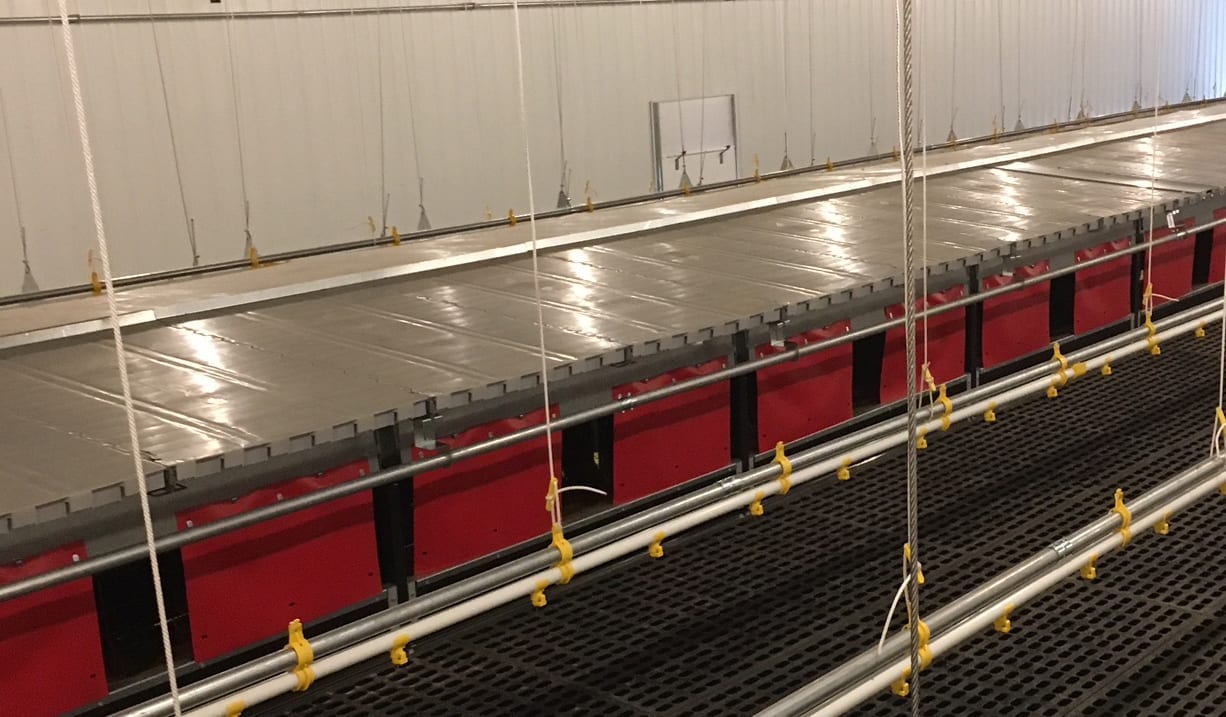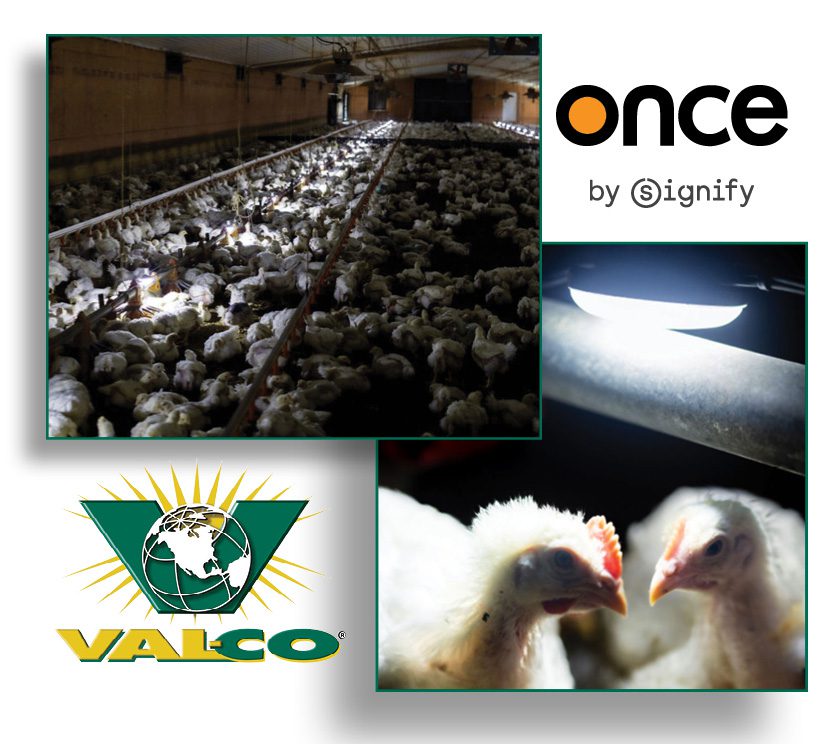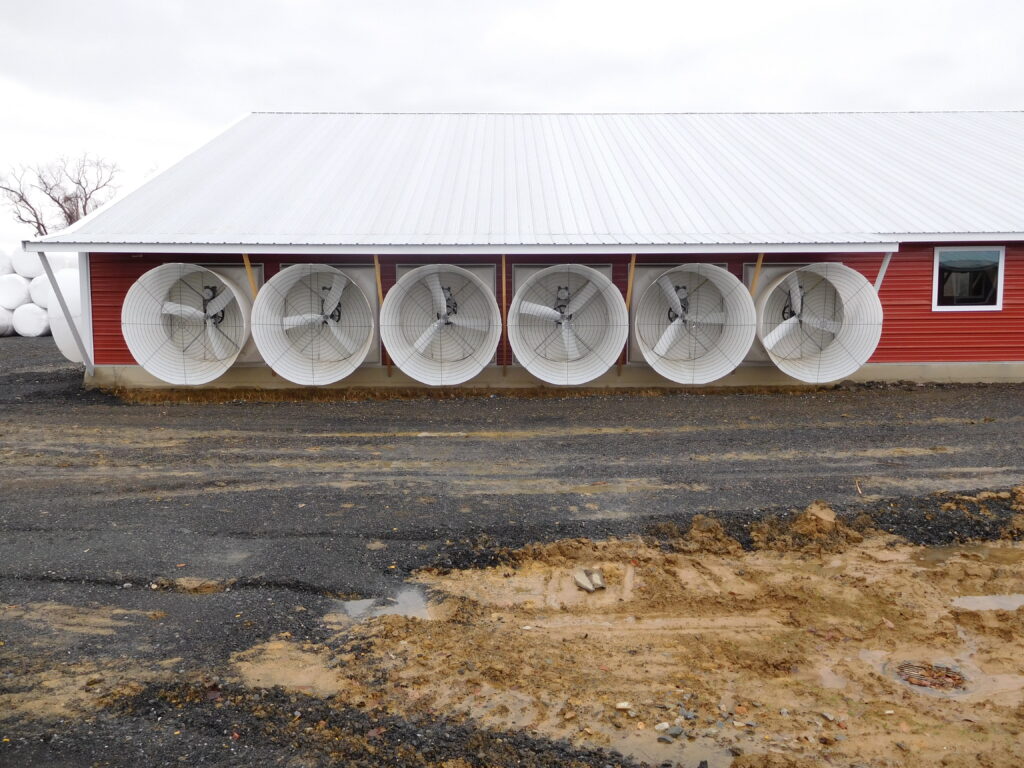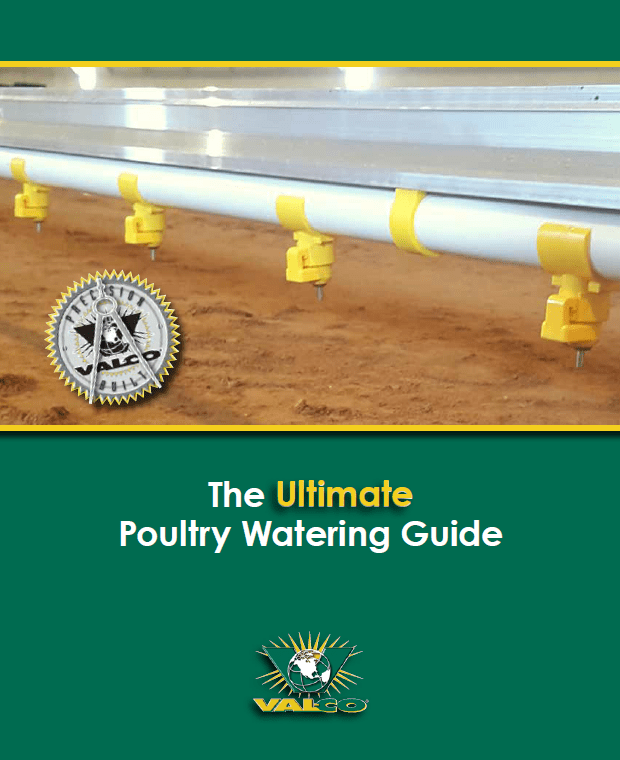There are several options when it comes to choosing what nesting option is best for your farm. Hens prefer nests that are dark, secluded, warm and comfortable. It is important to create optimum environment for nesting to reduce the risk of floor eggs. Eggs laid outside of the nests are more likely to be contaminated by bacteria through increased contact with feces and litter. Hens tend to begin examining potential spots to lay one to two hours before actually laying the egg. Hens will make several visits to the nest before selecting where to lay. A stressful event can cause a fear response in the hen and delay egg laying. An example could be suddenly starting the egg belt at high speed, so it is best to slowly start the belt to not frighten the birds. Ensure that the nest area has even ventilation, lighting, free from excessive vibration or mechanical noise and kept in good condition with regular maintenance. Good flock management and creating positive nesting experiences are important as nesting behaviors are habituated soon after egg production begins and once established, become difficult to change.[1]
Below outlines the advantages of the VAL-CO nesting options
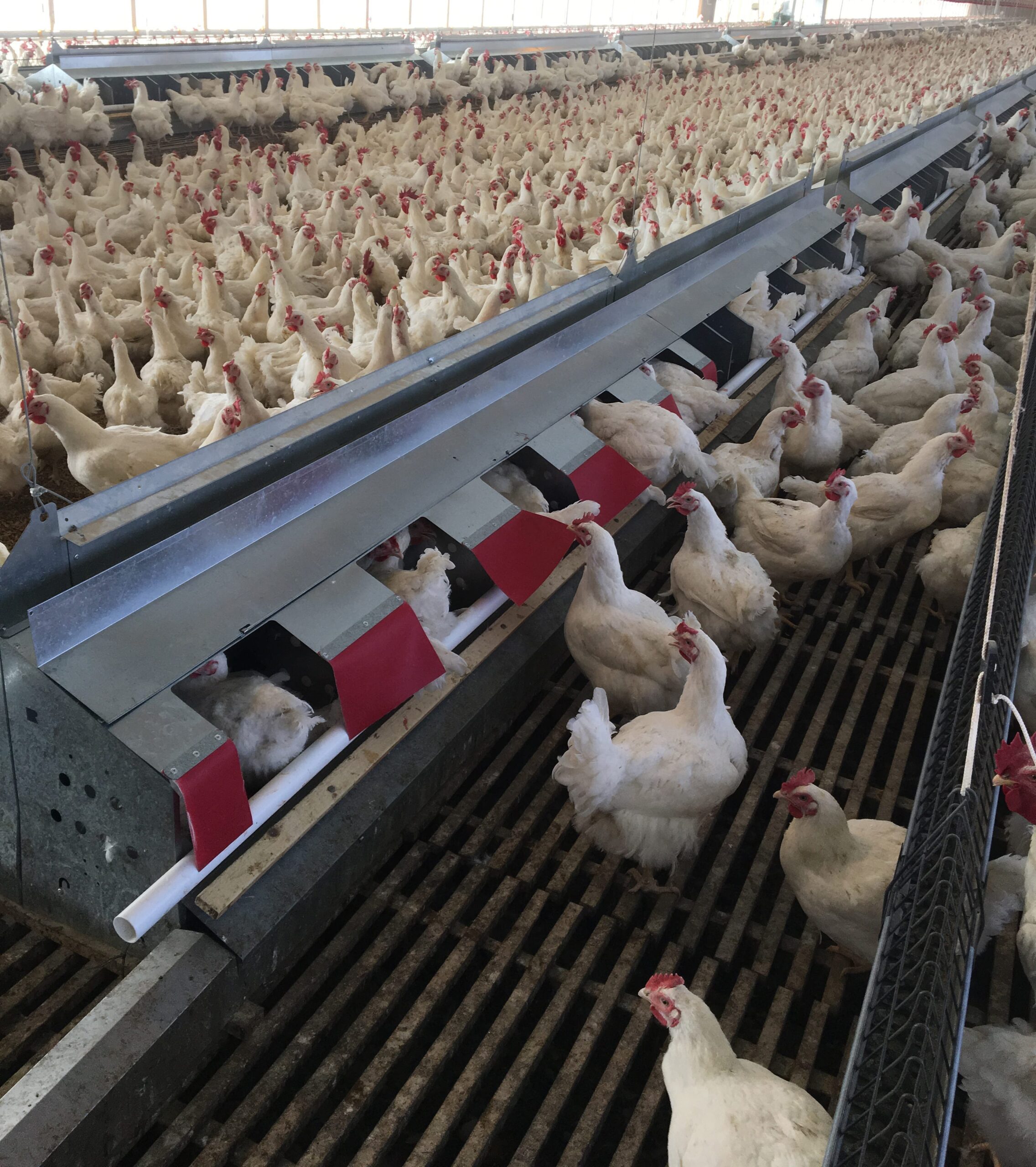 INDIVIDUAL MECHANICAL NESTS are the more affordable automatic option as far as initial capital expense is concerned. This option is more common in the US with a house setup of 2/3 slats and 1/3 scratch area in the center of the house. There is one line of nests on each of the slat areas, with a total of 2 lines of nests per house. An advantage to this configuration is low percentage of floor or slat eggs.
INDIVIDUAL MECHANICAL NESTS are the more affordable automatic option as far as initial capital expense is concerned. This option is more common in the US with a house setup of 2/3 slats and 1/3 scratch area in the center of the house. There is one line of nests on each of the slat areas, with a total of 2 lines of nests per house. An advantage to this configuration is low percentage of floor or slat eggs.
The center and side-belt individual mechanical nests are designed for bird comfort and privacy for laying. The molded plastic bottom is curved to fit the shape of the hen and provides a more natural feel for the hens to lay. Concave flooring is preferable to hens over flat-bottomed nests.[2] It is important to make sure the flaps are in good condition; the nest holes are well ventilated and maintained well so birds feel comfortable. If birds see the belt moving or it is overcrowded, too bright or too dirty and poorly maintained, birds are more likely to lay floor eggs. Hens like having room to move around, therefore VAL-COs new 19” Comfort Nest is a fantastic option for giving birds more room to lay. The Comfort Nest, which has a double-wide nest hole, provides plenty of ventilation with minimal draft.
In case of power failure, the belt on both the center and side-belt nests can be accessed for manual egg collection. Both options can also be accessed easily for maintenance to keep the operation running smoothly. A disadvantage to individual nests is that you have a more limited stocking density. The female density is limited to a maximum of 5.5 females/m².[3] You often are limited to how you can lay out watering and feeding equipment. If you want to utilize the space in your barn for effectively, with the option of more chain feeding loops (and therefore feeder space), and raise the stocking density potential, then Community Nests would be a better option.
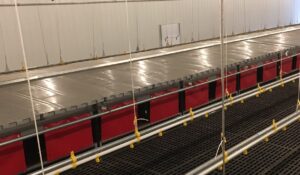 COMMUNITY NEST design originated in Europe, where nests are placed in the center of the barn with slats extending out from the nest, with scratch area on either side. An ideal layout would be 40% slatted area, 60% scratch area.[4] This layout allows for three chain feeder loops, if necessary, one on each scratch area and one on the slats around the nests. It is important to manage this layout well, as it does have potential for increased floor eggs if not designed properly. For example, there should be lighting placed above the edge of the slat area so as not to create shadows in the scratch area at the end of the slat, as if there are shadows it is common for hens to nest and to lay floor eggs there. It is important to keep litter in the scratch area to 2 to 3 centimeters (1 inch) maximum to discourage hens from nesting and laying eggs in the litter.[5] The slats should also be at a good angle, for example 8 degrees for plastic slats, so the hens can easily access the nests and feeders and drinkers on the slats.
COMMUNITY NEST design originated in Europe, where nests are placed in the center of the barn with slats extending out from the nest, with scratch area on either side. An ideal layout would be 40% slatted area, 60% scratch area.[4] This layout allows for three chain feeder loops, if necessary, one on each scratch area and one on the slats around the nests. It is important to manage this layout well, as it does have potential for increased floor eggs if not designed properly. For example, there should be lighting placed above the edge of the slat area so as not to create shadows in the scratch area at the end of the slat, as if there are shadows it is common for hens to nest and to lay floor eggs there. It is important to keep litter in the scratch area to 2 to 3 centimeters (1 inch) maximum to discourage hens from nesting and laying eggs in the litter.[5] The slats should also be at a good angle, for example 8 degrees for plastic slats, so the hens can easily access the nests and feeders and drinkers on the slats.
VAL-CO’s Freedom Community Nest is designed with bird comfort in mind and designed to be inviting to hens, encouraging nest use and resulting in fewer floor eggs. Nest pads have larger holes to keep eggs away from contaminants. The Community Nest has both gentle nest slope for eggs to roll to the belt as well as a gentle expeller to prevent brooding but also not to frighten birds. Community Nests are available in flat, shingle and hinge tops. Flat top community nests can be used as extra floor-space for lighter layers. Extended nests are also available to provide even more nest space for bird comfort.
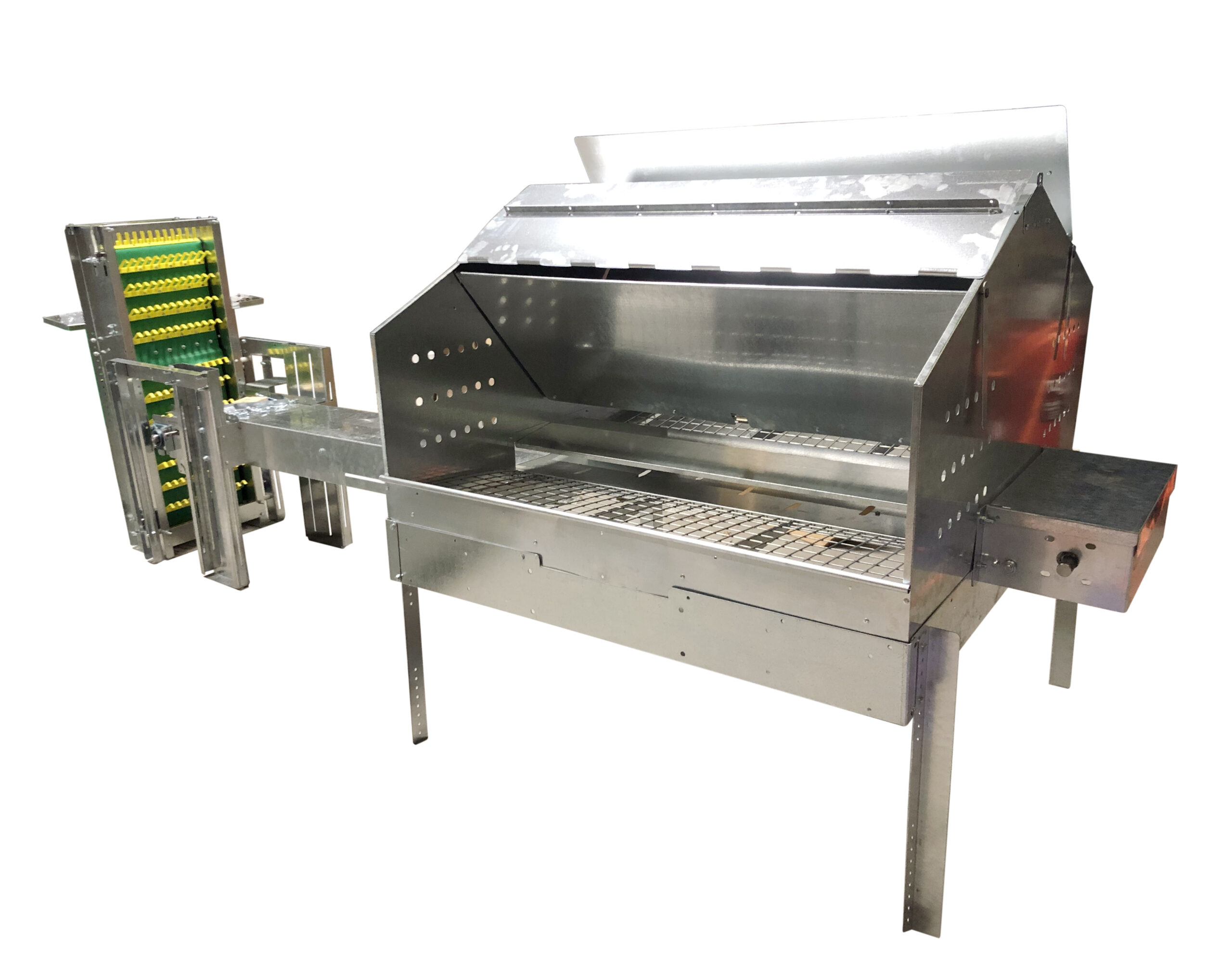 COLONY NEST is VAL-CO’s latest nesting option and is designed for the concept that birds are more comfortable going into a more open and spacious nest to lay eggs. The larger nest holes are more inviting to the hens as well as comfortable nest pads so that the hens are attracted to laying in the nest rather than the floor. A reduction of floor eggs means a higher output of high-quality eggs. Ventilation holes in the partitions help provide a comfortable environment, giving the hens a positive nesting experience. Black curtains on the front and back of the nest help create an ideal environment for laying eggs as well as preventing pecking at the eggs. The nest measures 48” by 48” with a belt running through the center and can house 100 birds (50 on each side). A gentle 7-degree pitch on the nest floor allows the eggs to gently roll onto the large 12” belt, reducing the chance of cracking.
COLONY NEST is VAL-CO’s latest nesting option and is designed for the concept that birds are more comfortable going into a more open and spacious nest to lay eggs. The larger nest holes are more inviting to the hens as well as comfortable nest pads so that the hens are attracted to laying in the nest rather than the floor. A reduction of floor eggs means a higher output of high-quality eggs. Ventilation holes in the partitions help provide a comfortable environment, giving the hens a positive nesting experience. Black curtains on the front and back of the nest help create an ideal environment for laying eggs as well as preventing pecking at the eggs. The nest measures 48” by 48” with a belt running through the center and can house 100 birds (50 on each side). A gentle 7-degree pitch on the nest floor allows the eggs to gently roll onto the large 12” belt, reducing the chance of cracking.
The VAL-CO Colony Nest is durable, manufactured with steel, and is adaptable to different configurations. The nest can even sit directly on the floor, be set at different heights, suspended with a winching system, or used in a conventional barn design sitting on slats. The egg belt drive is designed to follow the height of the nest with adjusting rods, and an elevator to collect eggs at any height, which can then be released at a pre-determined height for manual collection or delivery to a cross conveyor.
Contact your local dealer today to discuss which nesting option would work best for your farm!
[1] https://www.hyline.com/ViewFile?id=bcd0ac60-6cc4-4068-9398-61087a939d35
[2]Equipment Design for Breeding Flocks1 J. BRAKE2 Department of Poultry Science, North Carolina State University, Raleigh, North Carolina 27695-7608, p.2
[3] https://www.cobbafrica.com/wp-content/uploads/Cobb-500-Breeder-Managment-Guide.pdf, p.32
[4] https://www.cobbafrica.com/wp-content/uploads/Cobb-500-Breeder-Managment-Guide.pdf , p.32
[5] https://www.poultryproducer.com/commentaries/managing-mechanical-nests-for-the-best-performance-by-david-engel-north-american-technical-services-cobb-vantress/
